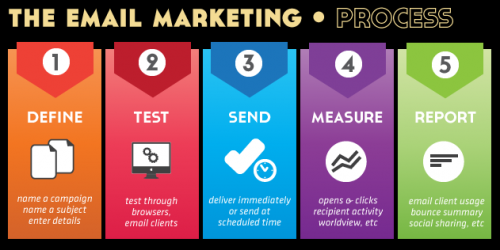Email marketing is big business. You’ve likely been on the receiving end of all kinds of email campaigns, maybe even set some up yourself. Either way, there’s really no escaping it in the modern world, and there’s a good reason for that fact.
It works!
Here’s the catch though: it works if you do it right, and fails pretty catastrophically if you don’t. So, what does “doing it right” entail?
That’s exactly what we’re here to discuss! Let’s dive in:
Content
The contents of your email are integral. After all, that’s the whole point of sending emails in the first place, right? So people will read your content and show interest in it. Whether you’re trying to share with them a product, a service, a video, or a contest, it doesn’t matter. If the content is boring, no one will care.
The content has to be well written, well designed, and easy to digest. You could have the coolest product in the world, but if your email announcing its launch is confusing, poorly written, assaulting to the eye, or just waaaaaay too busy, no one will care. They’ll take one look at the email (if they even open it) and trash it as quickly as they can.
Now, you don’t have to write a novel in your email or include every last detail about your offer. The email should spur the recipient to take action, to visit a website, to confirm a subscription, etc. This means two important things about the contents of your email: first, get to the point, and second, make sure your message is relevant!
The same is true for subject lines; you want to be direct without being overbearing. You want genuine interest and easy comprehension.
Most people see marketing messages as a waste of their time, so it’s your job to create something that isn’t. Don’t just email people for the sake of being in contact. Only send out a message when you have a good reason to do so. The more relevant your message, the more important it feels, the better the response will be.
There are all kinds of tips and tricks out there about what to say and how to say it, but the truth is, you have to find out what works for you.
There’s no such thing as a truly “average” customer – every market is a little different. So, for all of the tips and tricks out there about addressing your recipient by their first name (which can help), using “you” statements, posing questions, different phrasing for your call to action, different image layouts, color schemes, typefaces, line spacing – the list of “suggestions” available on the internet is maddening – you really just have to test out different methods and see what resonates with your customers and prospects.
That, conveniently, brings us to our next topic!
Tracking
If you want to know what’s working and what isn’t, you HAVE to put tracking measures in place. Fortunately, most of the commonly used email marketing systems have these kinds of features built in.
They let you track open rates, what links are being clicked, etc. If you’re combining this email tracking with other trackable stuff, like sales pages, promo codes, and those kinds of goodies, you can get a really good sense of how people are interacting with your emails and how well they are functioning to increase opt-ins, make sales, and foster customer engagement.
Each system is a little bit different, and some of them are far more robust than others. Whatever system you might be using, from InfusionSoft and other CRMs, to Constant Contact,
MailChimp, and other dedicated email services, be sure to explore all of the tracking options they have available.
Even if you don’t immediately make the most of the information, it’s better to have the data now than it is to wish you had it in the future.
Since you’re going to be tracking the actions your customers take to make sure you’re getting the most out of your email campaigns, this means you’ll be maintaining some kind of database (automated or otherwise) of your customers and prospects.
Well, if you really want to connect with the people you’re emailing, you can use this info (and your intuition, and any other info you might have about them), to personalize the emails you send.
As part of the email systems mentioned above, you can already do things like insert first names to personalize a greeting, but through tracking purchase actions, or even determining areas of interest, you can send much more individually relevant messages.
These methods of personalization allow you to send an email that addresses your customer by their first name, contains a reference to the article they clicked on in your last email, provides a tip about the product they bought from you, and suggests a follow up purchase or upgrade that will help them get more out of the item they already bought.
This stuff is virtually limitless; you can follow up with surveys about specific purchases, further information based the services they’ve shown interest in, cater language to details they’ve indicated in reviews or in an online profile they have on your site.
The point is to craft an email that feels like it was meant for THEM specifically. No one cares about the mass email from the faceless corporation. Everyone cares about an email from a close friend.
More than just personalizing, show that you actually CARE about your customer or prospect’s wellbeing. This is part of being personal (and personable). Don’t just inundate them with pitches and offers. Send out information that’s beneficial to them, not just to your bottom line. Over time, this builds trust and rapport, and makes the selling part a whole lot easier.
Mobile/Optimization
Part of meeting your recipients halfway is delivering messages they can read and understand – in the way they prefer to receive them.
First off, this means you simply must optimize your emails for mobile devices. MailChimp offers a ton of insight on this topic, but the general idea is to make sure that the people viewing emails on their phones and tablets aren’t subject to long load times (because of images/graphic elements that are too large). Also be sure your messages resize for smaller screens, and links and buttons should be made larger for easy touchscreen use.
Taking this even further, though, your emails should be easy on the eyes for ALL platforms. Because all email clients (including those on mobile devices) will display emails a little differently, this is something else worth testing! Services like Litmus allow you to see how your email will be viewed on a variety of devices, systems, and email clients. Make sure your messages look good on all of them.
When/How to Send
Like the advice scattered across the internet about content specifics, you can find an endless number of studies about the best time of the day to send emails, what day of the week, what to put in your subject line, whether or not to capitalize, what to include as your “from” signature, etc.
Now, this information IS valuable, but you can’t just take the stats and run with them, expecting to achieve the same results. It’s important to consider the other factors that might be at work. Sure, a study can say that Tuesday morning at 9:15 a.m. gets the best response rates, but those emails may be going specifically to work email addresses – and that’s why Tuesday morning is such a good time to send. You might read another study that claims Sunday evening has the best response rates; maybe those emails are targeted to stay-at-home parents, who happen to be most active on their computers at this time of the week.
In other words, the stats are helpful, but you have to find the ones that fit your industry (or simply fit what you’re trying to accomplish). There aren’t universal formulas here. Like content, you have to test to see what works best for you.
Now, the question of HOW to send your emails has a little bit more of a specific answer because, well, there are some actual rules involved.
The CAN-SPAM Act of 2003, among other regulatory measures, has laid out some ground rules for commercial emailing. Fortunately, a lot of those systems mentioned above have compliance measures built in. But just in case, let’s look at a few that can get you in trouble (or at least ruin your ability to send out marketing emails).
- Unsubscribe links: Your messages are required to have a clear link for recipients to unsubscribe from your mailing list.
- Subject lines: Your subject lines aren’t allowed to be deceptive, and they must be relevant to the body of the message you send.
- Contact information: Messages must contain the physical address of the publisher or advertiser sending it out.
- Accurate “from” info: Messages must come from an accurate and legitimate “from” source.
Again, a lot of this stuff is taken care of by the services available for sending mass emails. You can embed your address and unsubscribe link in the footer, the “from” address is more or less automated for you, and the subject line, well, that’s probably something you can handle just fine.
There is, however, something extremely important that we haven’t covered yet: who you send your messages to. This is actually much more about “how” than “who,” but they are inherently tied together.
You see, almost all marketing email operates based on lists – lists of people to send to, lists of people who opened and are marked to receive another email, lists of people who only want certain updates, and on and on …
But where those lists come from is EXTREMELY important.
You have to get people’s permission if you don’t want to be flagged as spam, brushed off as an annoyance, or worse: have your company on their personal blacklist. Permission comes in the way of opt-ins – when people actually sign up for your newsletter, provide an email address in exchange for access to a trial or information, or otherwise voluntarily give you an address (and consent to receiving your material).
Sure, you can buy lists, but those people are going to see your emails as pure, uninvited spam. You could gather email addresses from other sources, but your messages will still be unwanted. To truly send effective messages, you should be sending them to the people who want them or at least have volunteered to receive them. Anything else is both a waste of your resources and a threat to the reputation of your company.
Automation
A little different than some of the personalized/friendly messages we’ve been discussing, automating the right kinds of messages can also yield big results.
If someone abandons an online shopping cart with items in it, an automated email might bring them back. An automated follow up thanking a customer for their purchase, a how-to guide for the doo-dad they just had shipped, a few recipes for the crockpot they just ordered … you get the idea.
Sometimes an email can be a welcome little companion to an interaction, and you can setup automated responses to certain actions that keep you in contact, show that you’re interested in helping out the people who do business with you (or just show interest in your company), and provide a little extra value to whatever transaction has just taken place.
Best of all, this stuff is pretty “set it and forget it”; once you have the actions setup, it works on its own.
Now, this kind of automation does require email blast services, CRMs, etc., but if you’re digging into email marketing, you should probably be exploring that stuff anyway!
Be Cool
This is the last “category” we’ll cover, and it isn’t so much a specific set of tips as it is a rule of thumb for your marketing efforts.
Put yourself in the recipients’ shoes. What would you think about receiving an email like the one you’re about to send? Is it worth your time? Does it capture your attention?
If you were the customer or prospect, would you think your company was cool?
Any time you’re about to send out a message, think about the emails in your own inbox. It might help you think twice before sending too frequently, sending unnecessary info, or coming on too strong with a sales pitch.
The best email responses come from messages that people actually want to receive.
OKAY! That’s one of the longer entries we’ve had here, but this is a mighty complex topic with lots and lots of layers. This has been a fairly comprehensive overview, but there are volumes more information available about this stuff.
The key takeaways, among all the technical points, are: be cool, be relevant, and if you want to know what works best – find out what works best FOR YOU.
Good luck with your email campaigns!
Need a hand getting started?











